Abstract
A set of semantic interpretation rules to link the syntax and semantics of locative relationships among anatomic entities was developed and implemented in a natural language processing system. Two experiments assessed the ability of the system to identify and characterize physico-spatial relationships in coronary angiography reports. Branching relationships were by far the most common observed (75%), followed by PATH (20%) and PART/WHOLE relationships. Recall and precision scores were 0.78 and 0.67 overall, suggesting the viability of this approach in semantic processing of clinical text.
Full text
PDF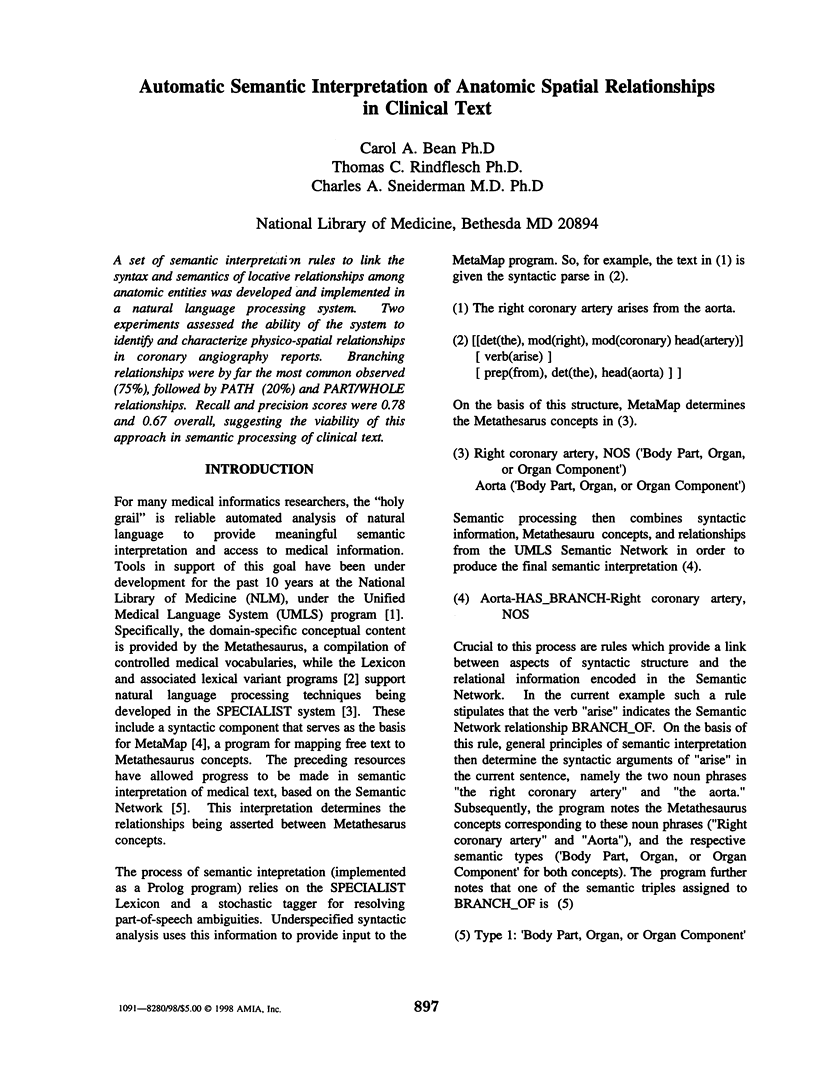
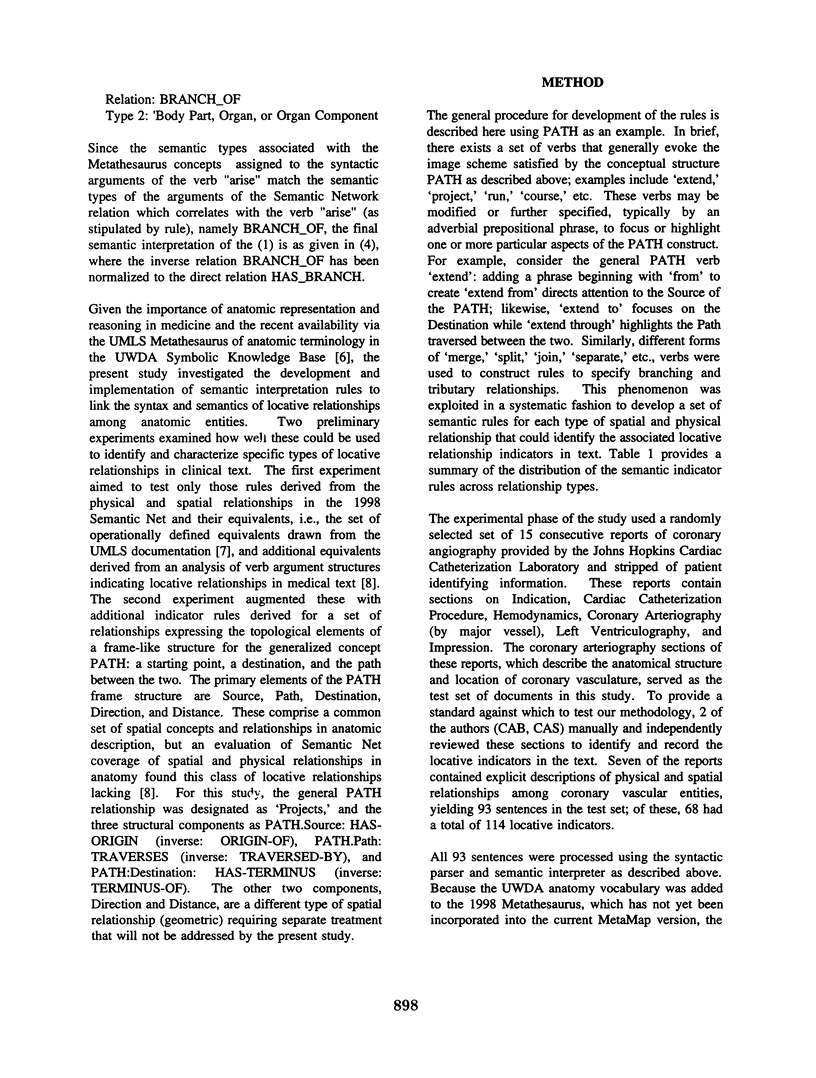
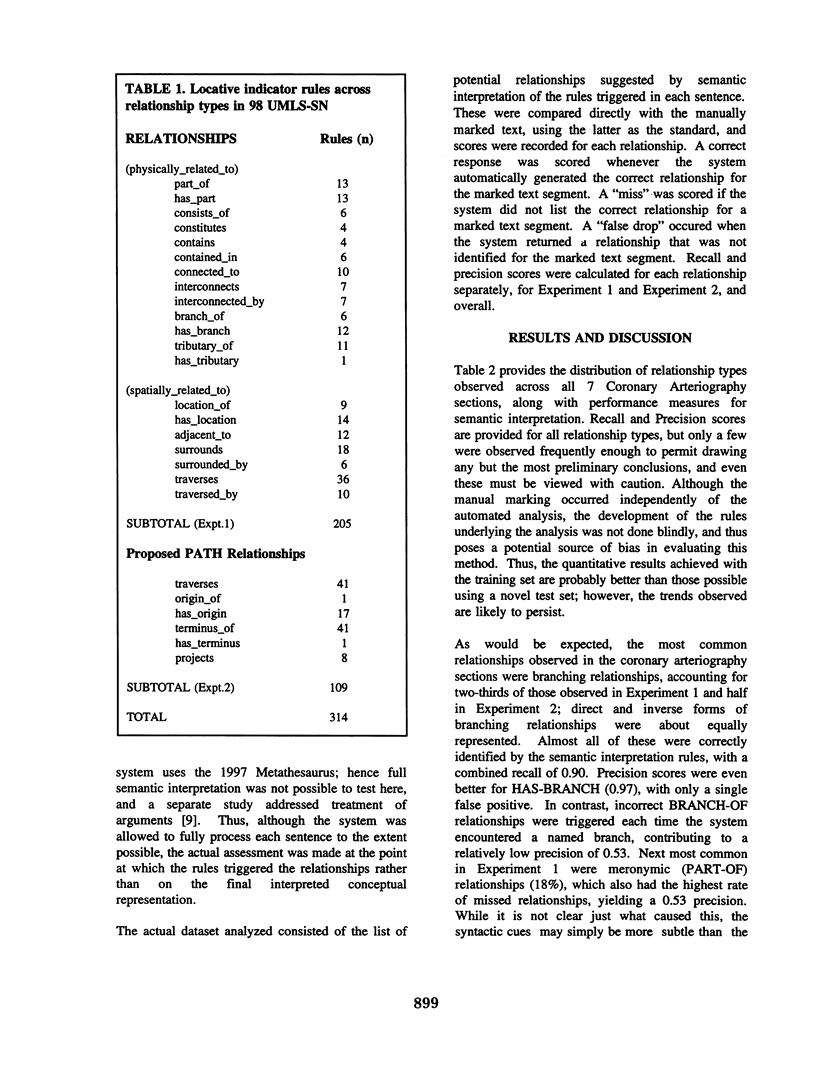
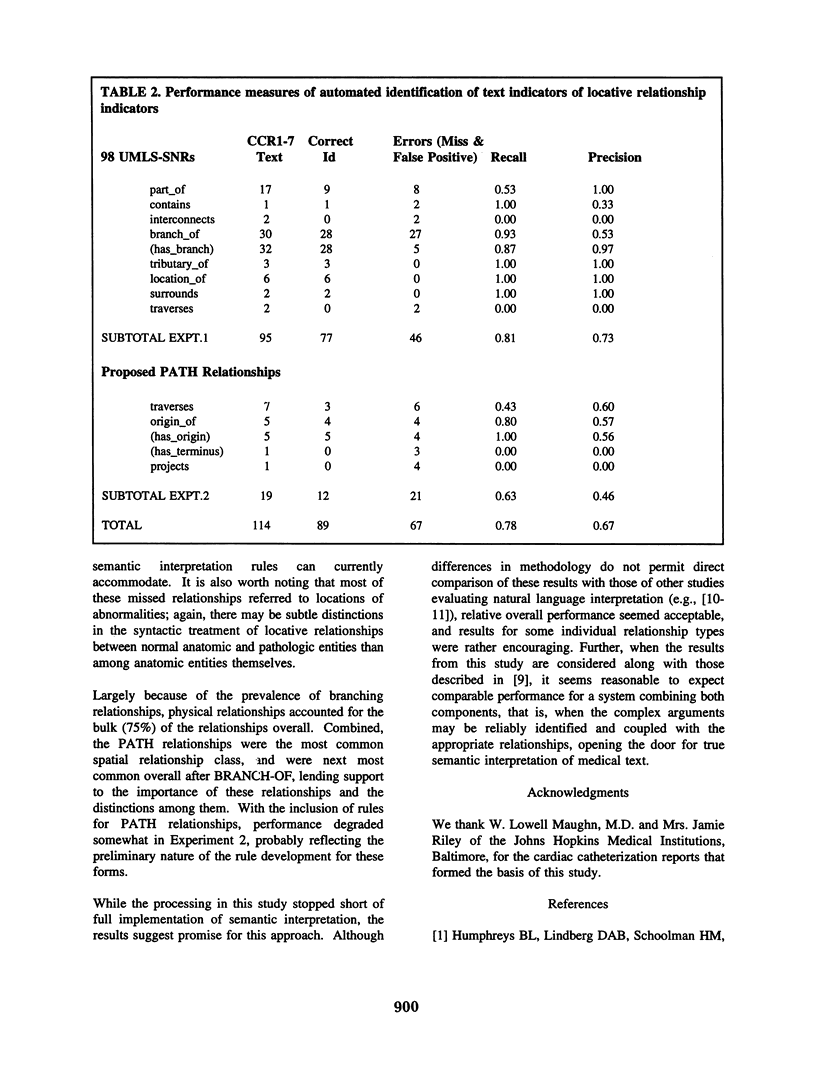
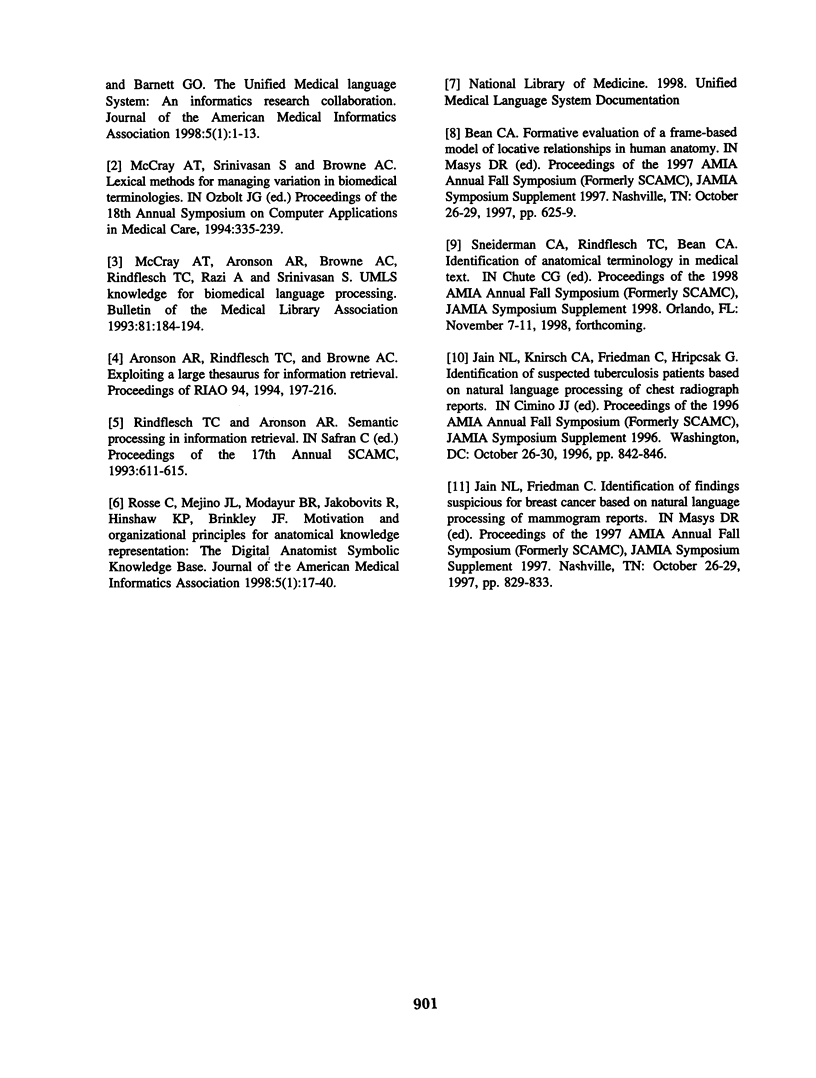
Selected References
These references are in PubMed. This may not be the complete list of references from this article.
- McCray A. T., Aronson A. R., Browne A. C., Rindflesch T. C., Razi A., Srinivasan S. UMLS knowledge for biomedical language processing. Bull Med Libr Assoc. 1993 Apr;81(2):184–194. [PMC free article] [PubMed] [Google Scholar]
- McCray A. T., Srinivasan S., Browne A. C. Lexical methods for managing variation in biomedical terminologies. Proc Annu Symp Comput Appl Med Care. 1994:235–239. [PMC free article] [PubMed] [Google Scholar]
- Rindflesch T. C., Aronson A. R. Semantic processing in information retrieval. Proc Annu Symp Comput Appl Med Care. 1993:611–615. [PMC free article] [PubMed] [Google Scholar]
- Rosse C., Mejino J. L., Modayur B. R., Jakobovits R., Hinshaw K. P., Brinkley J. F. Motivation and organizational principles for anatomical knowledge representation: the digital anatomist symbolic knowledge base. J Am Med Inform Assoc. 1998 Jan-Feb;5(1):17–40. doi: 10.1136/jamia.1998.0050017. [DOI] [PMC free article] [PubMed] [Google Scholar]


